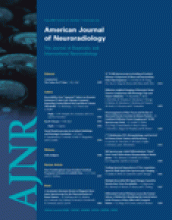Abstract
BACKGROUND: Results from cerebral proton 1H-MR spectroscopy studies of neonates with perinatal hypoxic-ischemic injury have generally been presented as metabolite peak-area ratios, which are T1- and T2-weighted, rather than absolute metabolite concentrations. We hypothesized that compared with 1H-MR spectroscopy peak-area ratios, calculation of absolute metabolite concentrations and relaxation times measured within the first 4 days after birth (1) would improve prognostic accuracy and (2) enhance the understanding of underlying neurochemical changes in neonates with neonatal encephalopathy.
METHODS: Seventeen term infants with neonatal encephalopathy and 10 healthy controls were studied at 2.4T at 1 (1–3) and 2 (2–4) (median [interquartile range]) days after birth, respectively. Infants with neonatal encephalopathy were classified into 2 outcome groups (normal/mild and severe/fatal), according to neurodevelopmental assessments at 1 year. The MR spectroscopy peak-area ratios, relaxation times, absolute concentrations, and concentration ratios of lactate (Lac), creatine plus phosphocreatine (Cr), N-acetylaspartate (NAA), and choline-containing compounds (Cho) from a voxel centered on the thalami were analyzed according to outcome group.
RESULTS: Comparing the severe/fatal group with the controls (significance assumed with P < 0.05), we found that Lac/NAA, Lac/Cho, and Lac/Cr peak-area ratios increased and NAA/Cr and NAA/Cho decreased; Lac, NAA, and Cr T2s were increased; [Lac] was increased and [Cho], [Cr], and [NAA] decreased; and among the concentration ratios, only [Lac]/[NAA] was increased. Comparison of the normal/mild group with controls revealed no differences in peak-area ratios, relaxation times, or concentration ratios but decreased [NAA], [Cho], and [Cr] were observed in the infants with normal/mild outcome. Comparison of the normal/mild and severe/fatal groups showed increased Lac/NAA and Lac/Cho and decreased NAA/Cr and NAA/Cho peak-area ratios, reduced [NAA], and increased Lac T2 in the infants with the worse outcome.
CONCLUSIONS: Metabolite concentrations, in particular [NAA], enhance the prognostic accuracy of cerebral 1H-MR spectroscopy—[NAA] was the only measurable to discriminate among all (control, normal/mild, and severe/fatal outcome) groups. However, peak-area ratios are more useful prognostic indicators than concentration ratios because they depend on metabolite concentrations and T2s, both of which are pathologically modulated. Concentration ratios depend only on the concentrations of the constituent metabolites. Increased Cr T2 may provide an indirect marker of impaired cellular energetics, and similarly, NAA T2 may constitute an index of exclusively neuronal energy status. Our recommendation is to collect data that enable calculation of brain metabolite concentrations. However, if time constraints make this impossible, metabolite peak-area ratios provide the next best method of assigning early prognosis in neonatal encephalopathy.
- Copyright © American Society of Neuroradiology












